You want to grow hydroponically. Whether you’re totally new or just adding on to an existing system, you need an overview of all your choices before you start on the hydroponic design.
In this article, we’re going to review the parts of a hydroponic system, the 5 main methods of hydroponics, and factors to choose the perfect system for you.
The 3 elements of hydroponic design
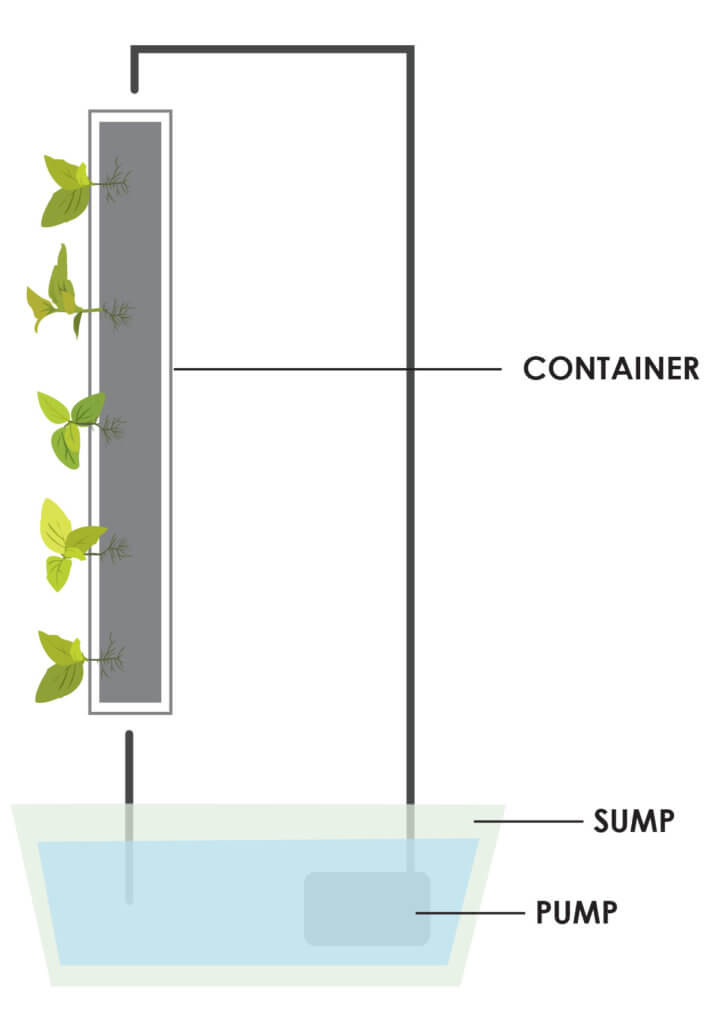 1) Growing container.
1) Growing container.
This could be a bed, a bucket, a tower, a raft, or really any watertight container that can support the media that it holds. The container is the part of the system that hosts the plants while the nutrient solution is flooded, streamed, or dripped through the media inside.
2) Sump tank.
The sump tank holds and sometimes mixes nutrient solutions. In some systems, there is both a sump tank and a mixing tank. The use of both a sump tank and a mixing tank is more common on a commercial scale when separate levels for drainage and irrigation are needed or when an auto dosing system benefits from a separate tank.
3) Pump.
As we’ve outlined in previous posts, there are two main types of pumps, each appropriate for different sized systems. (See this post to a size a pump.)
*There’s a very simple method called the Kratky method that combines the sump with the growing container. No pump is needed because all the solution is available to the plant immediately. This is a very neat method that requires beautifully formulated solutions.
Types of hydroponic systems:
DWC – Deep water culture. DWC systems use a floating raft to hold plants over a solution tank, similar to a chinampa of the Aztecs. Solution is moved from the sump through the tanks very slowly to deliver nutrients without disturbing the delicate roots too much. This is great for tropical regions because of the great temperature stability in the root zone, though they can have problems with dissolved oxygen levels.
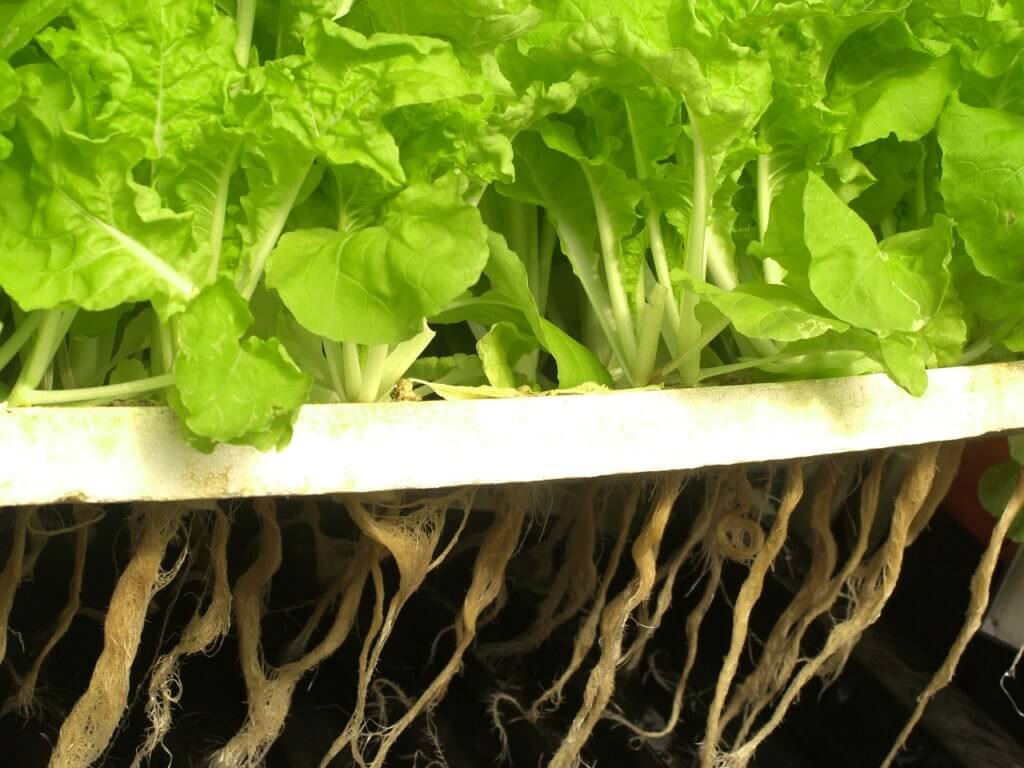
NFT – Nutrient film technique. NFT systems use a series of shallow troughs. Solution is run down the length of the trough (or gutter) in a very thin film. This is a very common method in greenhouses on a single horizontal plane. It’s cheap to build up front but not very space efficient.
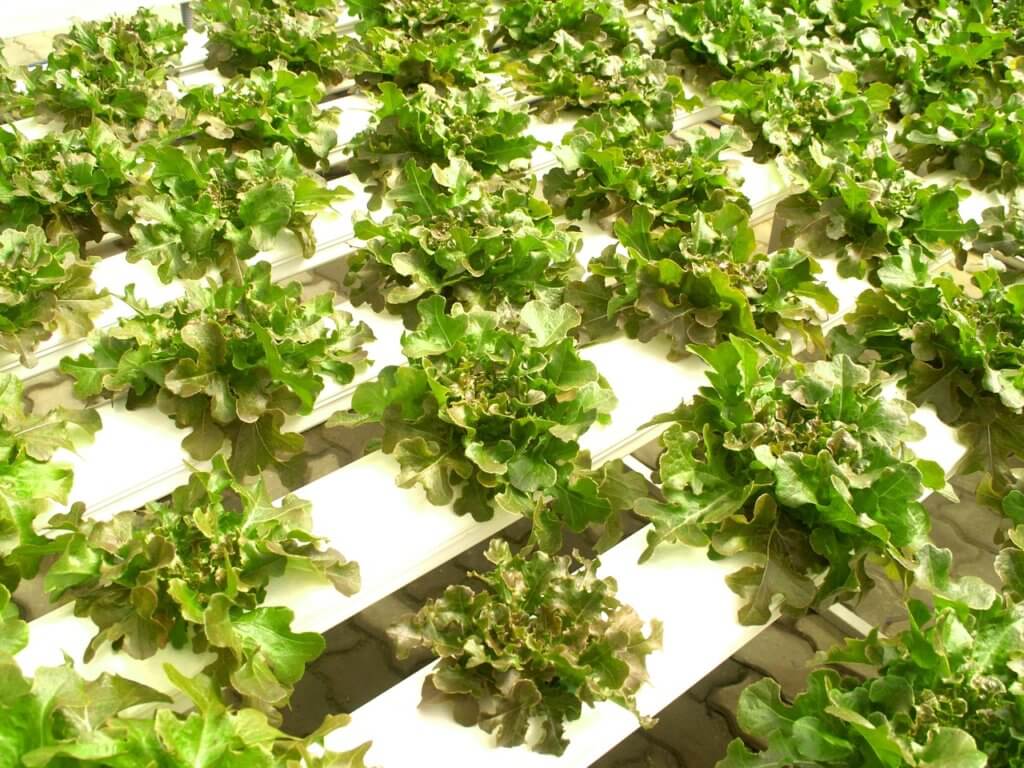
ZipGrow – ZipGrow and other vertical tower systems use vertical planes to grow in 3-dimensional space rather than a single horizontal plane. These types of systems are more space efficient with lower operating costs, though upfront costs tend to be higher.

Aeroponic – Aeroponic systems grow plants primarily in air using a fine mist to deliver the solution to plant roots. Aeroponics systems are cool and can be cost-effective, but are tough to manage; nozzles tend to clog up and root zone temperatures are not stable.
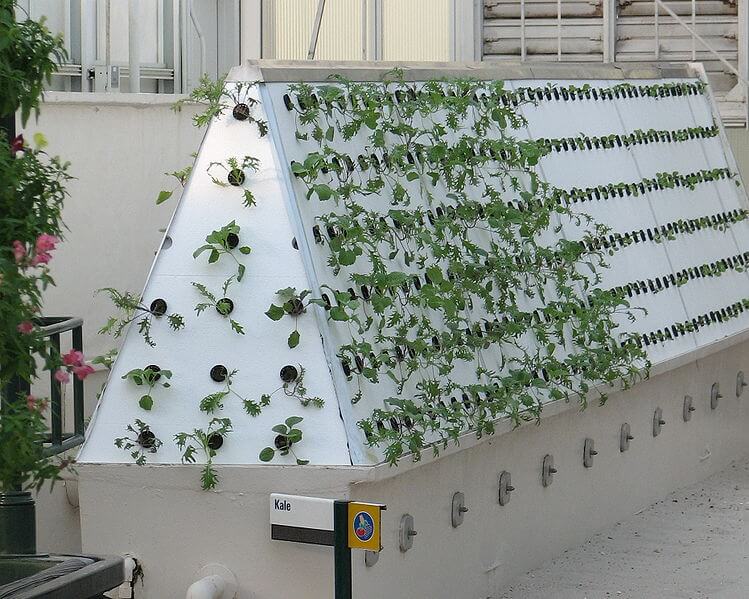
Photo by: Benjamin D. Esham / Wikimedia Commons
Media-based – Media-based systems are any system that uses an aggregate or fiber media in a container. Media beds and Bato buckets are the two most common methods here. These are great techniques for large-statured crops that need a lot of root support but aren’t always space efficient.
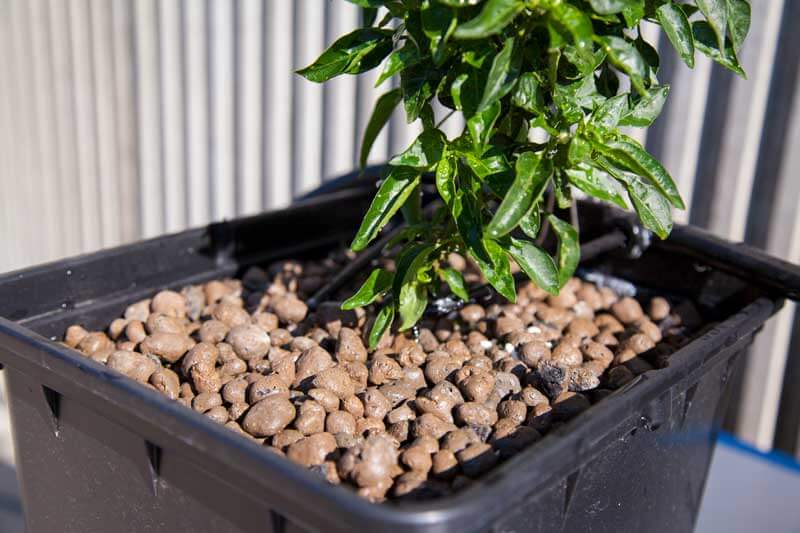
If you’re familiar with any one of these techniques, you know that these are very broad categories, and each has dozens of variations in layout and design. Growers have a lot of choices when it comes to choosing a system!
Choosing a technique: design factors
There are four main factors in choosing a technique that fits you.
- Location. Your location dictates temperature and sunlight angles. How consistent will the temperature be? Do you need great light reflection?
- Facility. Your facility is perhaps the biggest determining factor for methods since layout, environmental factors, utilities, and pricing all interact. Do you need a versatile technique to work around pillars, small rooms, etc? Do you need a system that can deal with temperature fluctuations?
- Crops. The two important questions are A) What temperatures do my crops need? and B) Are my crops large- or small-statured?
- Management/Labor. How efficient do you need labor to be? How many people will you have to help with the farm?
Can I build a system myself?
Small growers can build almost anything themselves. When you start getting to commercial scale operations, you should find an electrician, architect, and help with planning. This is especially important for commercial growers because mistakes are much more costly at a large scale, and there’s usually much less margin for error.
Need more details?
Don’t miss the Choosing Your Production Method course to learn about all of these methods in more depth. Or check out our Ultimate Guide to Starting a Farm for more tips on planning your facility!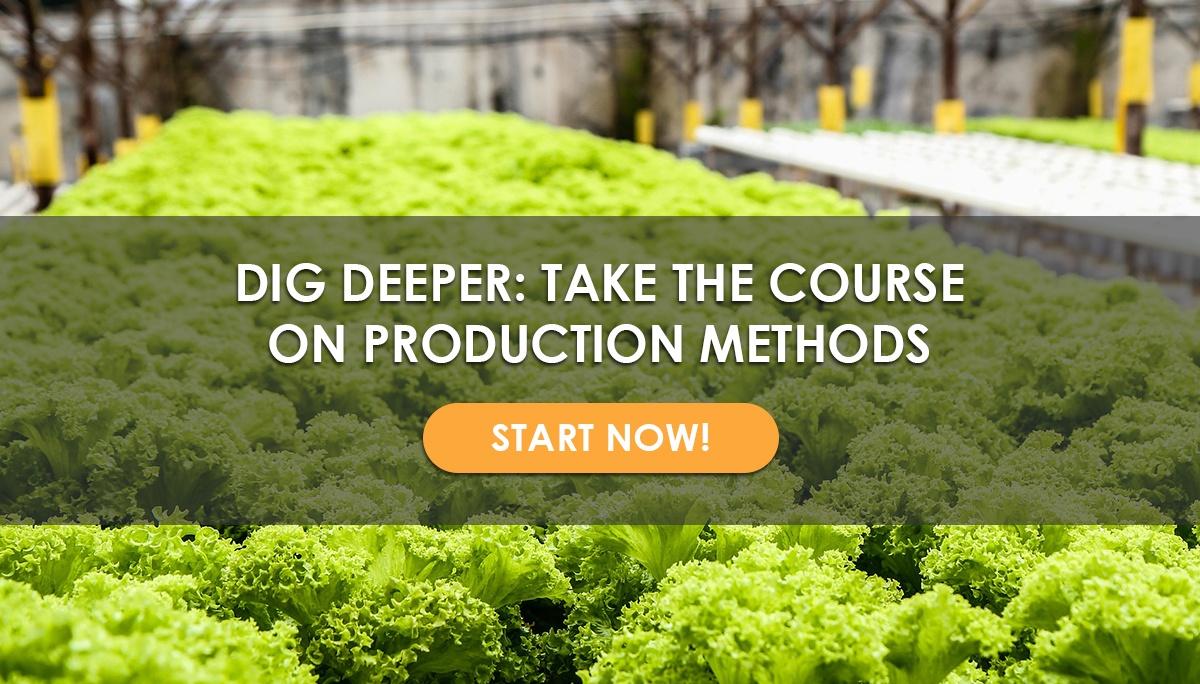

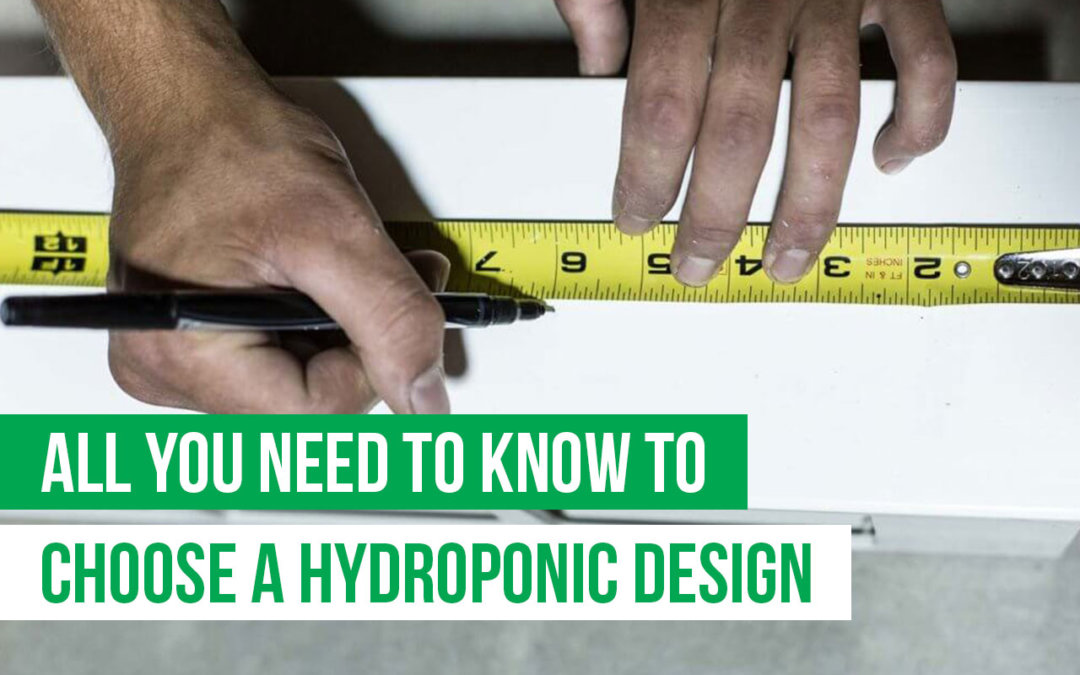

Hi,
I want to try an hydroponic culture of Yoca. What type of hydroponic system is better for this culture?
Hi Serge, do you mean yucca? Since the plants are quite large I imagine a media bed system of some kind would be best. We’ve never tried yucca – let us know how it goes!
Hello Serge,
Actually Hydroponic culture of Yucca is not a good idea, because as you know mostly hydroponics is done for leafy vegetables.
But give it a try and let us know what are the results if it works its going to be a achievement indeed.
thanks
Aerofarm is a company that uses aeroonia mix supposedly with great success because is in strong expansion in the world
Very informative. What kind of hydroponic system would work best for indigo?
What was the name of that website to check out?
Hello,
This is a very nice blog. very useful information for the hydroponic system. thanks for sharing with us.
Hello,
The really the blog information is choose hydroponic design is great and helping. thank you for share this blog
Amy….have exhausted and studied all systems and ZipFarm is my preferred indoor system.
I’m proposing to build a commercial operation indoors in 3 phases 3000sf, 5000. 15000 with final expansion to 25000sf.
Question: would Zip Grow by interested in building out entire system for me while being mentored to phase 1?
I’m in southern Ontario 1 hour north of Toronto Canada and request your input .
Look forward to your reply
hi!!
I want to start a small pilot project, have procured a DWC and plan to start with Lettuce on my terrace, what temperature will be good and can it be in the open